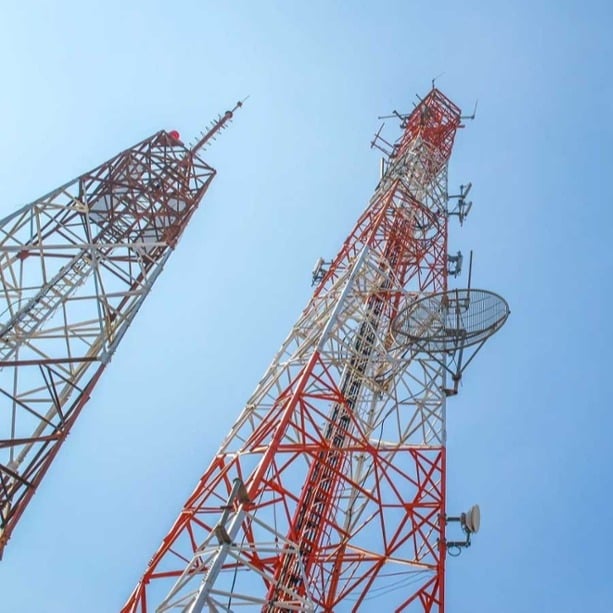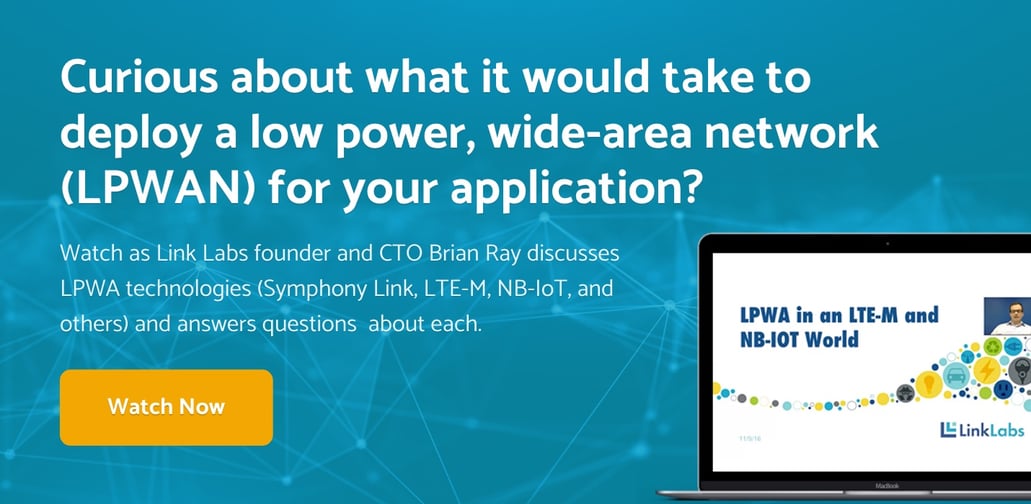The debate on what kind of technology is best suited for very large area low-power wide-area networks is frequently discussed in the IoT community. Companies like Sigfox, Ingenu, and the LoRa Alliance see unlicensed LPWAN as a viable option, and others—like us at Link Labs—believe cellular carriers are the best solution.
There are a few reasons for this:
- Cellular networks like Verizon have evolved to offer highly power-efficient technology. LTE-M (or LTE Cat M-1) was created (and standardized by 3GPP) to make devices that operate on cellular carrier networks less expensive and more power efficient.
- Cellular carriers can easily deploy an IoT network. Because cellular carriers like Verizon already have such far-reaching LTE networks, they need only to load new software on their base stations to enable M2M solutions to work. This makes cellular companies ideal candidates for adding low-power wide area applications on their networks.
- Cellular carriers are experts at device management, making it easier to deploy an M2M solution through a carrier. Cellular companies have all the routers, gateways, and other systems in place that are needed to deploy millions of devices on the same network—which gives you a leg up if you decide to deploy your M2M system through a cellular carrier.
There are a few drawbacks to cellular IoT, as compared to alternate low power, wide-area networks like Symphony Link. For example, LTE-M requires a data plan for each device—so if you deploy tens of thousands of devices in an area, it may be more cost effective to deploy using a low power wide-area system like Symphony Link. Additionally, if you have battery-constrained devices, LTE-M draws more power than a system like Symphony Link would.
LTE-M has grown rapidly, and undoubtedly, Verizon has become the leader in the cellular M2M space.
But will Verizon's M2M solutions power cellular IoT?
This is a question we’re asked frequently—but the answer isn’t a simple yes or no.
In fact, we believe any number of cellular carriers—from Verizon, to AT&T, to Sprint, and others—all have opportunities to make headway in the M2M space, and we expect any one of these cellular carriers could own a great deal of cellular IoT market share in the coming years.
That said, Verizon does have the most LTE coverage in the U.S.—and in order to do LTE-M, you need LTE coverage. This alone gives Verizon a big leg-up to becoming the leader in the LTE-M space. Additionally, Verizon offers customers complete IoT solutions for a number of applications around IoT telematics, cold chain monitoring, fleet tracking, smart city connectivity, and more.
Furthermore, Verizon has put in a great deal of work to be on the cutting edge of cellular IoT with innovations like ThingSpace—an IoT device management platform that automates some M2M managerial tasks including device activation, deactivation, and suspension. (Note: You are not required to use ThingSpace if you deploy with one of Verizon’s M2M plans. Here at Link Labs, customers using the LL-LTE-M certified module use Conductor, our data management platform, to manage devices.)
For all these reasons, we selected Verizon as our first partner for the LL-LTE-M-VZN-S pre-certified module.
Our module is the world's first end-device certified LTE Cat-M1, and it is pre-provisioned on the Verizon network. Because Verizon’s off-the-shelf M2M applications are expensive and often require additional customization, it’s often much more cost-effective and straightforward to design a pre-certified module into an application.
Best of all, using the LL-LTE-M-VZN-S module, you can pilot a solution in under a day. If you have more questions about LTE-M and how it compares to LPWA—and which use cases make sense for which technology—check out the webinar below.




